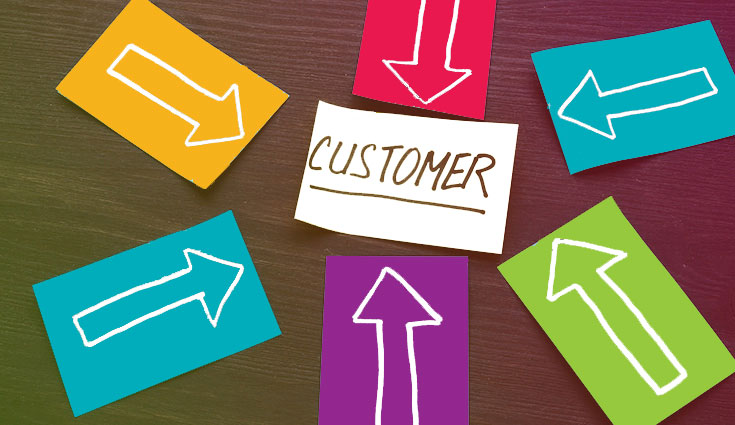We’re excited to launch our new “Customer 360” blog series today that examines why direct sales organizations should fully embrace more customer-centric business initiatives and how they can deliver a drastically improved customer experience by combining data, processes and technologies with their already powerful business model built on human interactions.
This first installment in our three-part blog series focuses on what Customer 360 really means, the benefits for direct sellers and their organizations, as well as a glimpse into the things needed to achieve it.
In today’s world, being “customer centric” isn’t just part of a strategy for successful brands. Their strategy is built around this concept, driving both customer experience and the technology needed to enable it.
Being customer centric involves understanding consumers, reaching them when and where it matters most, and creating business operations that support servicing them. That means you need to understand your customers’ buying habits, patterns, interactions with your products and happiness with those products. Reaching them when and where it matters most means connecting with them via email, text message, and social media—at home or on the go. And, it’s essential to create business operations and processes that support a customer-centric mindset in your employees, and empower them to “live” that customer-centric mission.
It’s easy to say you’re customer centric, but much more difficult to design and execute business processes that align with this direction. That is one of the biggest challenges facing the direct sales industry. Products may be designed perfectly for customers—effective and functional—but if they have a problem replenishing their product or a question for customer support—and their experience is not too stellar—it’s going to negatively impact the overall brand experience, the potential for positive word-of-mouth referrals, and you will more than likely lose customers as a result.
The Complexities of Data and Technology
Data is a huge part of monitoring and understanding the customer experience. And, it’s everywhere! We’re at the point now that there is so much data available to us, you’re at a higher risk of looking at and using the wrong information to evaluate customer satisfaction, business growth, efficiency, etc.
Like data, technology can enable you to get closer to your customer, be more efficient in your business, scale, and grow. But, it’s a double-edged sword. There are a lot of companies and software programs that could be beneficial, but only show you a glimpse of the big picture or, worse, end up creating gaps in your operational processes.
Buying the right technology will allow you to:
- Address your most urgent needs and gaps;
- Connect the different silos of your business together, improving operations and efficiency; and
- Improve your customers’ experience.
Being Customer Centric in Direct Sales
In the direct sales world, being customer centric can provide even more challenges because your distributors often take a front seat to your customers, and (for the most part) the distributors own the relationship with the customer.
Most direct sales companies have one huge weakness in common: lack of retention—on both the distributor and customer side. In order for direct sales companies to thrive and flourish in today’s landscape, they need to:
- Empower their employees;
- Engage their distributors;
- Understand their customers’ needs and experience with the company; and
- Establish stronger relationships with their existing customers—which can be challenging, but not impossible.
Not only does your business need to improve the relationship with its existing customers for the sake of your longevity and revenue, but for legal concerns. It’s no secret that the Federal Trade Commission (FTC) has been increasingly looking at direct-sales and multi-level-marketing (MLM) models. If you can’t increase your customer retention and teach distributors to focus on their existing customers, there may be trouble ahead.
A Checklist to Begin Your Customer-360 Journey
In order to start building a sustainable Customer-360 business model, you’ll first need to understand, measure, benchmark and monitor the following data points:
- Customer experience (which includes from the first time they hear about your brand through every touchpoint once they become a customer)
- Average distributor-to-customer ratio (The more customers a distributor has, the better, but there is a limit to how many customers a distributor can effectively service)
- Average customer spend
- Average customer retention
- Average number and frequency of purchases per customer
- Average product reorder rate
- Average corporate touchpoints per month for each customer
- Average customer engagement with corporate
- What corporate channels are most effective (email, text, social media, etc.)
- Average distributor touchpoints per month for each customer
- Average customer engagement with their distributor
- Distributor event ROI
- Conversion rate of prospect to customer and what channels are most effective
- Customer-service ticket resolution percentage
In order to empower your distributors to become more customer focused, you’ll need to ensure they have the ability to:
- View a concise summary of each of their customers (order history, last communication, upcoming orders, etc.)
- Understand which customers have/have not tried each product
- Easily and proactively communicate with customers across multiple channels based on past orders, products they have/have not ordered, follow-up on purchases, recommendations, etc.
- Educate their customers about the products without having to be “the expert”
- Understand how many active versus inactive customers they have as well as the associated downline customer ratio
- View their event ROI
- Stay in compliance in regard to claims
- Providing them tools that reduce the amount of time it takes to contact multiple customers
- Ensuring common questions can be easily answered by the distributor without calling into customer service
- Providing them actionable data, especially showing their progress
In Part II of our series, we’ll dive deeper into the role data plays in achieving a 360-view of your customers.


